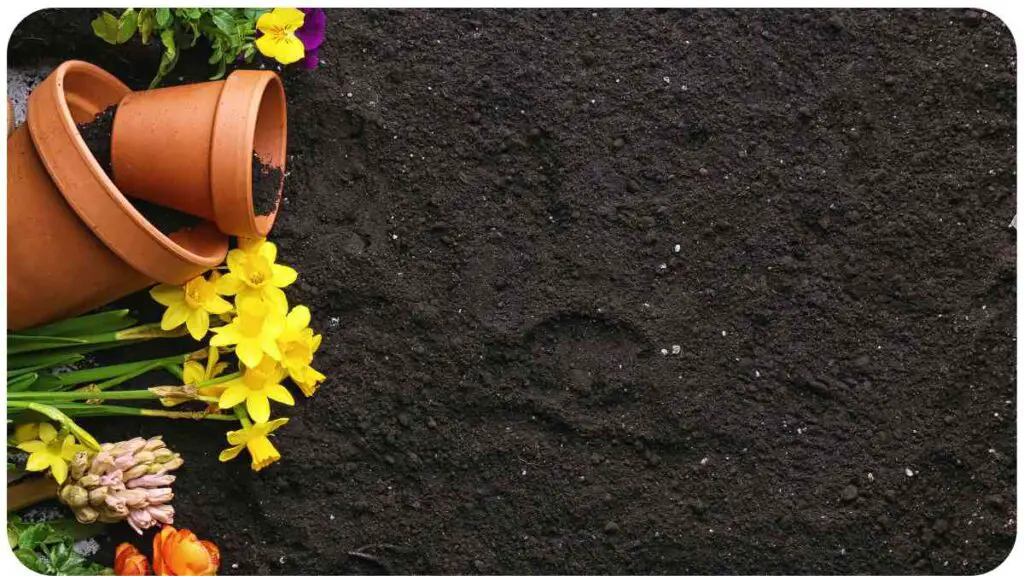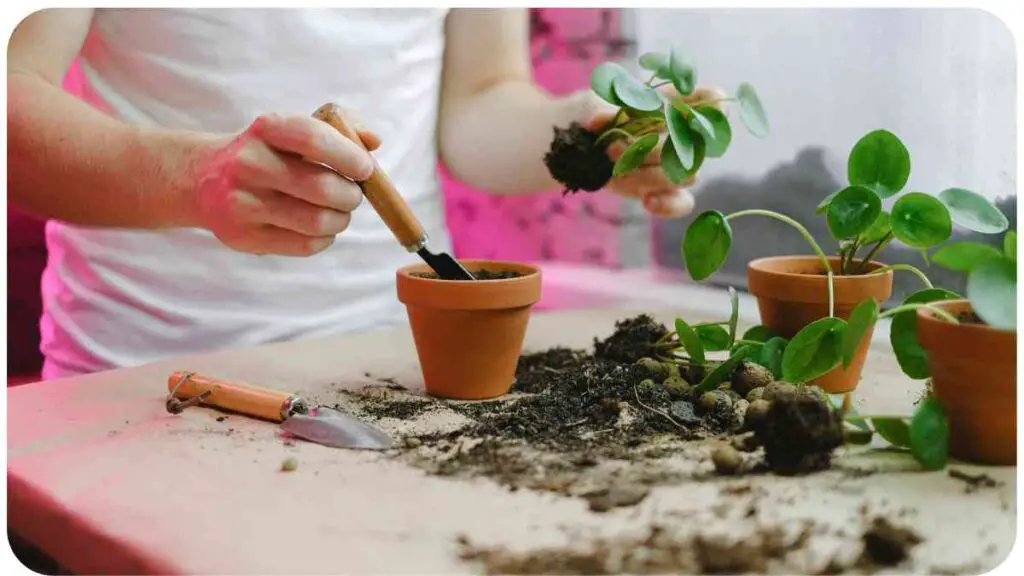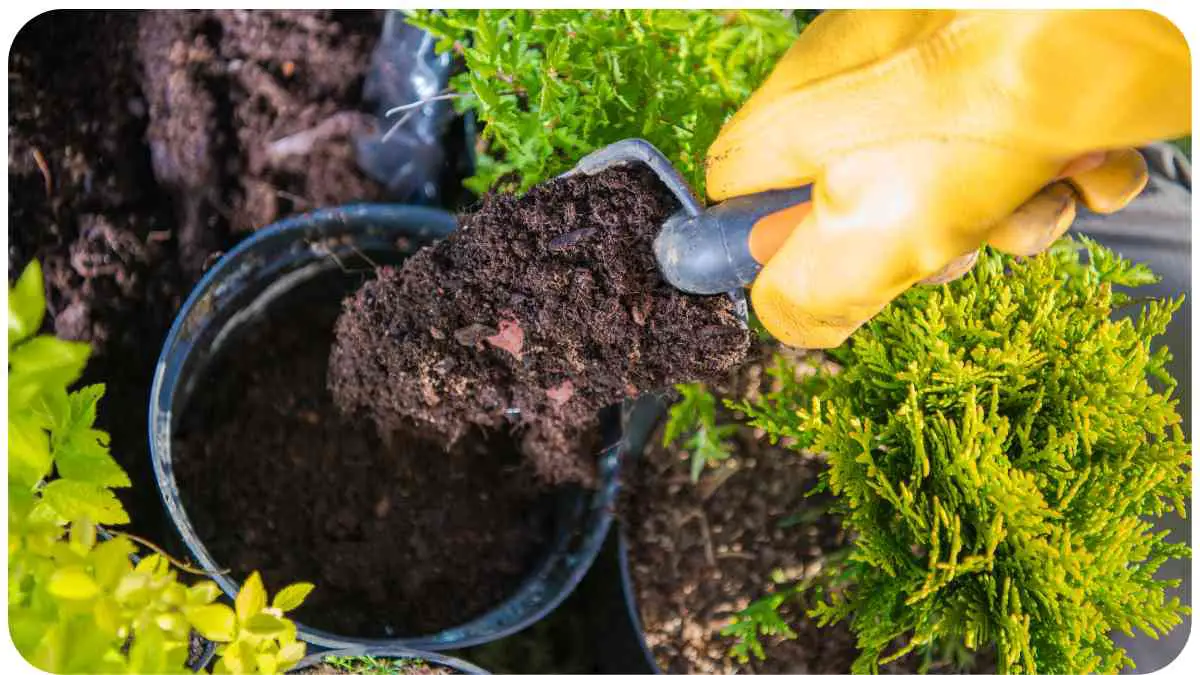Are you looking to green up your thumb without breaking the bank? You’re not alone! Saving money on potting soil can feel like a daunting task, especially when you’re trying to grow beautiful plants.
Whether you’re a seasoned gardener or just starting out, the good news is there are plenty of ways to cut costs while still getting high-quality soil for your plants. In this article, we’ll explore everything you need to know about potting soil and share actionable tips that will help you save money.
| Takeaways |
|---|
| Create your own potting soil using budget-friendly ingredients like compost and peat moss. |
| Recycle old potting soil by refreshing it with compost or worm castings. |
| Buy potting soil in bulk to save significantly, especially for larger projects. |
| Look for sales or discounts at local garden centers to find the best deals. |
| Consider using natural alternatives like coconut coir for a sustainable option. |
| Mix in materials like perlite or vermiculite to enhance drainage without adding costs. |
| Use containers creatively by repurposing items you already have around your home. |
| Plan your gardening projects in advance to avoid last-minute purchases of expensive potting soil. |
| Get involved in community gardening groups to share resources and potting soil. |
| Regularly check for local mulch or composting services that can provide free or low-cost soil amendments. |
Understanding Potting Soil

What is Potting Soil?
Potting soil is a specially formulated mix designed for growing plants in containers. Unlike garden soil, potting soil is lighter and contains a variety of organic materials that promote drainage and aeration. It typically includes components like peat moss, vermiculite, and compost, providing a nurturing environment for your plants.
Learning the importance of proper tree care can significantly extend the life and beauty of your trees. For an in-depth look at how tree trimming impacts growth and health, read more on this detailed guide about tree trimming best practices to understand how trimming benefits long-term health.
Types of Potting Soil
Potting soil comes in various formulations depending on what you’re growing. Here’s a quick look at some common types:
| Type of Potting Soil | Best For |
|---|---|
| All-Purpose Potting Soil | Most houseplants and flowers |
| Seed-Starting Mix | Germinating seeds |
| Cactus and Succulent Mix | Drought-resistant plants |
| Organic Potting Soil | Chemical-free gardening |
Why Potting Soil Can Be Expensive
Many gardeners may not realize that the cost of potting soil can vary widely based on the ingredients, brand, and quality. Specialty mixes can range from $5 to $20 per bag! The ingredients used in premium potting soils, such as organic matter and additives like fertilizers, can drive up prices. Understanding this helps us find ways to save money.
Tips to Save Money on Potting Soil
Make Your Own Potting Soil
Why buy when you can make your own? Crafting your own potting mix is not only cost-effective but also allows you to tailor the ingredients to your plants’ specific needs. All you need are some basic materials:
| Ingredient | Purpose |
|---|---|
| Peat Moss | Water retention |
| Perlite | Drainage |
| Compost | Nutrients |
| Worm Castings | Micro-nutrients |
Mix these in equal parts for a simple, effective potting soil recipe.
Use Compost and Mulch
Compost is like the magic ingredient for any garden. It enriches your soil, providing nutrients while improving drainage. Instead of buying potting soil, consider using homemade compost mixed with some store-bought potting soil for an economical boost. Using mulch on top can also help retain moisture, reducing the need for frequent watering.
Maintaining a lush, green lawn requires more than just regular mowing. Check out the essential tips on choosing the right grass type for your sandy soil to enhance your lawn’s appearance and resilience, especially in areas with challenging soil conditions.
Buy in Bulk
If you have a large garden or multiple pots, buying potting soil in bulk is a game-changer. Many garden centers offer discounts for bulk purchases. Consider joining community gardening groups or co-ops to save even more.
Look for Sales and Discounts
Keep an eye out for seasonal sales, especially during spring and fall. Many garden centers discount their potting soil to make room for new inventory. You can often find good deals at local stores or online. Sign up for newsletters to receive alerts on special promotions!
DIY Potting Soil Recipes

Basic Potting Soil Recipe
Here’s a straightforward recipe for a basic potting mix you can whip up at home:
- 2 parts peat moss
- 1 part perlite
- 1 part compost
To prevent tree hazards, it’s crucial to perform regular maintenance. This guide on the importance of tree pruning explains how pruning improves tree structure and prevents dangerous limbs from falling, helping you maintain a safe and healthy environment around your property.
Mix thoroughly and store in a cool, dry place. This mix provides excellent drainage while retaining moisture for your plants.
Cactus and Succulent Mix
Cacti and succulents thrive in well-draining soil. Here’s a simple recipe:
- 1 part potting soil
- 1 part coarse sand
- 1 part perlite
This mixture ensures your cacti and succulents won’t sit in water, keeping them happy and healthy.
Seed Starting Mix
Starting seeds can be tricky without the right mix. Try this seed starting recipe:
- 2 parts peat moss
- 1 part vermiculite
- 1 part compost
This light and airy mix helps with seed germination and prevents damping-off disease.
Alternative Materials for Potting Soil
Coconut Coir
Coconut coir is a fantastic substitute for peat moss. It’s sustainable and helps retain moisture while providing good drainage. It’s also less acidic than peat, making it suitable for a wider range of plants.
Peat Moss
Though peat moss is commonly used, it can be pricey and environmentally damaging. If you choose to use it, try mixing it with other materials to stretch your budget and reduce your environmental impact.
Perlite and Vermiculite
Both perlite and vermiculite are excellent for improving soil aeration and drainage. You can often find these materials at lower prices in bulk. They also help prevent compaction in your potting soil.
Mulching is one of the best ways to protect your trees and shrubs. If you’re unsure of the process, this helpful article on how to mulch your garden offers step-by-step instructions to help conserve moisture and improve the soil structure around your plants.
Storing Potting Soil Efficiently
Storing your potting soil correctly can help you save money in the long run. Make sure to keep it in airtight containers to prevent it from drying out or attracting pests. A cool, dry place is ideal. If you’re using bags, store them upright in a sheltered area to avoid moisture buildup.
Installing an irrigation system can save water and time in the long run. If you’re considering this for your yard, check out the tips on irrigation installation and maintenance to help ensure proper hydration of your plants while maximizing efficiency in water usage.
Conclusion
By implementing these money-saving strategies, you can enjoy gardening without spending a fortune on potting soil. From making your own mix to using alternative materials, the options are endless. Remember, the best soil for your plants is one that meets their specific needs while fitting your budget.
Further Reading
- 5 Ways to Save Big on Potting Mix
Discover practical strategies for cutting costs on potting mix while still ensuring your plants thrive. This guide offers valuable tips that are easy to implement. - 5 Ways to Save Money on Potting Soil and Compost
Explore simple ways to save on potting soil and compost. This article provides insights into DIY methods and budget-friendly shopping strategies. - 6 Ways to Save Money on Container Gardening
Learn effective tips for reducing costs in container gardening. From choosing the right materials to maximizing your resources, this guide has you covered.
FAQs
What is the best way to save money on potting soil?
One effective way to save money is to make your own potting soil using inexpensive ingredients like compost, peat moss, and perlite. This way, you can customize the mix to your plants’ needs while cutting costs.
Can I use garden soil instead of potting soil?
Using garden soil in pots is not recommended. It can compact, lacks the necessary drainage, and may harbor pests and diseases. It’s better to stick with potting soil or a homemade mix for container gardening.
How can I improve my potting soil without buying new?
You can refresh your existing potting soil by mixing in compost or worm castings, which will add nutrients and improve soil structure. This method is economical and effective.
Is it better to buy potting soil in bulk?
Yes! Buying potting soil in bulk often leads to significant savings, especially if you have multiple containers or a large garden. Look for local suppliers or garden centers that offer bulk discounts.
How often should I replace potting soil?
It’s generally a good idea to replace potting soil every 1-2 years to maintain its quality. Signs that it’s time to change include poor drainage, compactness, or nutrient depletion.

For 15 years, Hellen James has worked in the gardening industry as an expert and landscape designer. During her career, she has worked for a variety of businesses that specialize in landscaping and gardening from small firms to large corporations.

